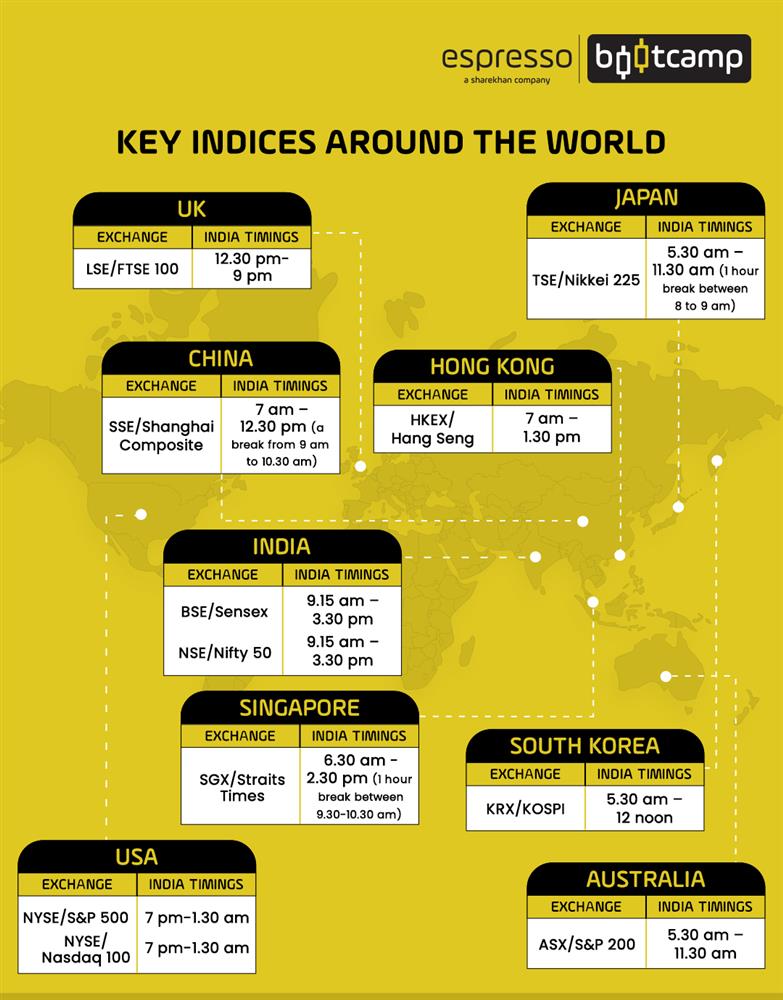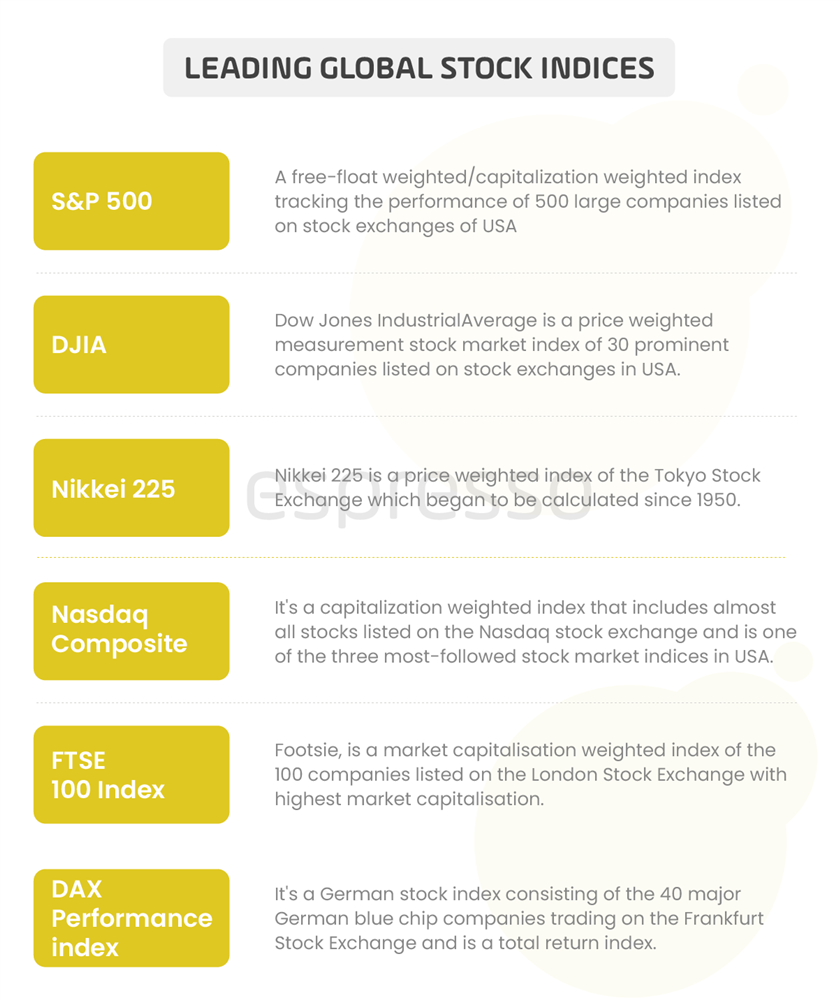There are countless items you use or consume on a daily basis such as vegetables, food grains, cereals, oil, toothpaste, powder, clothes, fuel, electricity, newspaper and so on. What you may have certainly noted is that their prices do not remain the same over time. Prices change due to several factors – demand-supply being a very important one.
Suppose you want to track the price trends of daily commodities over a period of, say, one year. You will have to pick up each item, find out its price a year ago, compare it with the current price, note the fluctuations over time and try to determine the factors behind every change in price. Even then, you may not be able to know the general trend in prices because some may have gone up, some may have declined, some may have remained constant, and not to mention the factors that have driven their behaviour.

In such a scenario, a statistical measure called an index comes handy. What are indices? Indices are time series' that summarise movements in a group of related variables.
For instance, Consumer Price Index (CPI) measures changes in retail prices paid by consumers, in the last year and the current one. Last year this time, the CPI index was 150, and now it’s hovering around 165. This means retail prices in general have gone up by 10% in one year.
Index number, therefore, is one that shows the variation in a price or value compared with the price or value at a specified earlier time. In short, it is a statistical measure in a representative group of individual variables.
It is widely used to measure trends in:
- Stock market prices
- Cost of living
- Industrial or agricultural production
- Imports and exports
In stock markets, indices play an important role in depicting trends, evaluating performances and influencing investment trends.
For instance, we may remember that during the COVID-led lockdown, major world indices dipped including the indices in India. The Nifty fell from 12,500 levels to about 8,000 in less than a month, after which it posted a quick rebound.
By watching this movement in indices, even a lay observer can assess that the stock market suffered a temporary jolt and conclude that the crash was due to external reasons and not because of an inherent problem with the economy.
The table below lists some of the Nifty 50 stocks with their closing prices as on January 1, 2021, and December 31, 2021. By looking at the prices of these individual stocks, you cannot gather the general trend of the market as the prices of some stocks have gone up and some have gone down. On the other hand, Nifty had moved up during the same period indicating that the general trend of the market in 2021 was upward.
| Stock Name | Closing price on 31/12/21 | Closing price on 1/1/21 |
|
Dr Reddy's |
4907.00 |
5241.35 |
|
Hindustan Unilever |
2360.15 |
2387.55 |
|
Maruti Suzuki |
7426.45 |
7691.30 |
|
Hero MotoCorp |
2462.10 |
3102.65 |
|
Coal India |
146.05 |
135.35 |
|
Reliance Industries |
2368.15 |
1987.50 |
|
Tata Steel |
1111.45 |
643.10 |
|
Hindalco |
475.55 |
238.35 |
|
Nifty 50 |
17354.05 |
14018.5 |
While constructing all indices, whether it is the major world indices or indices in India, sufficient care is taken to ensure its constituents. Stocks are perfect representatives of the entire gamut. In order to ensure this, the following factors have to be kept in mind while constructing indices:
Regularity:
Only stocks trading regularly end up featuring in indices. For example, for Nifty 50, the company’s trading frequency should be 100% in the past six months. Unless the stock is regularly traded, its true price cannot be discovered, and the inclusion of such stocks in indices may result in misleading results.
Free-float market cap:
In order for stocks to be part of the major global indices, they should have substantial free-float market capitalisation. It reflects the shares that are freely available for trading (i.e. excluding promoter shares, which are not usually freely available to be sold). In other words, if there are two companies with the same market capitalisation, but one company has a much higher free-float, the latter will have a higher impact on the indices where it is trading.
In the case of Nifty, for example, a company will be eligible for inclusion in Nifty 50, only if its average free-float market capitalisation is at least 1.5 times the average free-float market capitalisation of the smallest constituent in the index.
Liquidity:
To feature on any of the major world indices, the stocks should be highly liquid. Liquidity is measured by the impact cost, which represents the cost of executing a transaction in a given stock, for a specific predefined order size, at any given point in time.
For example, in the case of Nifty 50, impact cost is measured as the cost of executing a transaction in a security in proportion to its index weight, measured by market capitalisation at any point in time. Impact cost is measured as a percentage (%), i.e., the difference between executed price and ideal price (bid + ask)/2 and this data is published every month by exchanges.
While some stock exchanges insist on stocks completing a certain period of time before becoming eligible for inclusion on any indices, some, like NSE, include newly-listed companies within three months if all criteria relating to free-float market cap and liquidity are satisfied.

Major indices in India - Nifty 50 & BSE Sensex
Nifty 50 and BSE Sensex are the leading and widely-recognised indices of the Indian capital market.
While Nifty 50 is the flagship index of the National Stock Exchange (NSE), BSE Sensex is the creation of Asia’s oldest stock exchange, the Bombay Stock Exchange (BSE).
Nifty includes the 50 most liquid stocks traded on the NSE that captures approximately 65% of its float-adjusted market capitalisation.
BSE Sensex, also known as S&P BSE Sensex, is a free-float market-weighted stock market index of 30 well-established and financially sound companies listed on the Bombay Stock Exchange.
Points to remember
- Most institutional investors choose a market index and/or a combination of market indices as a benchmark.
- Major global indices are usually the reference for strategic allocation and a measure of investment management performance.
- In recent times, passive (or index) investing by way of ETFs (exchange-traded funds) is picking up substantially.
 0
|
0
|
 0
0
 Modules
Modules

 Watch
Watch 
